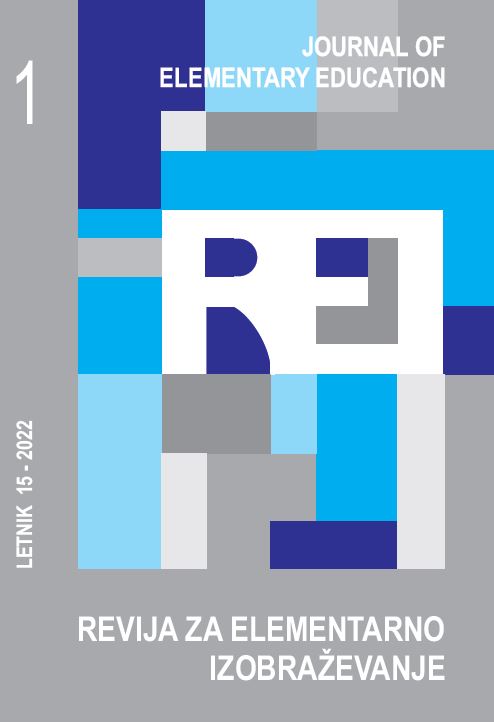Reconciling the Other: Travelling Objects and Collaborative Teaching
DOI:
https://doi.org/10.18690/rei.15.1.1-16.2022Keywords:
cultural inclusion, cultural identity, art education, collaborative learning, OtherAbstract
A collaborative art education project involving Japan and the Czech Republic focused on the enculturation processes experienced by two teachers and their students, how immersion in visual arts can contribute to cultural understanding and the reconciliation of two pedagogical approaches to art. This project also addressed this reconciliation with the unknowable ‘Other’ through the creation of artwork, ‘travelling objects’ and collaborative teaching. Outcomes include similarities between objects from the two countries and two pedagogical approaches and suggest that participants strived to reconcile the Other, thus creating a spatial and relational intermediate space by dealing with those objects and communicating together.
Downloads
References
Berry, J. (1997). Immigration, acculturation, and adaptation. Applied Psychology, 46(1), 5–34.
Blanuša Trošelj, D., Peiс́ Papak, and P., Zuljan, D. (2021) Teacher self-assessment of their science and technics competences and professional development. Revija za elementarno izobrazevanje, 14(1), 73–92.
Bourdieu, P. (2010). The Rules of Art: Genesis and Structure of the Literary Field (trans. P. Kyloušek and P. Dytrt), Brno: Host.
Eisen, Mary-Jane (2000). The many faces of team teaching and learning: An overview. New Directions for Adult and Continuing Education, 87, 5–14.
Dwivedi, O. P. (2001). The challenge of cultural diversity for good governance, United Nations Expert Group Meeting on Managing Diversity in the Civil Service United Nations Headquarters, New York, 3–4 May, 1–14.
Fujitani, S. (2015). Ibasho to shakai de ikiru kenri (‘Ibasho and the right to live in society’), in Sogoningengakki (Ed.), Ibasho no soshitsu, korekarano ibasho: seicho kyososhakai to sonosakie (Loss of ibasho, ibasho in the future: Growth competitive society and beyond’), Tokyo: Gakubun-sha.
Fulková, M. (2008). Diskurs umění a vzdělávání. Jinočany: H&H.
Fulková, M., Tipton, T., and Ishikawa, M. (2009). Through the eyes of a stray dog: Encounters with the Other. International Journal of Education Through Art, 5: 2–3, 111–28.
Giddens, A. (2000 [1993]). New rules of sociological method: A positive critique of interpretative sociologies. Second Edition, (trans. T. Fujii and K. Matsuo), Tokyo: Jiritsushobō.
Guo, S. and Jamal, Z. (2007). Nurturing cultural diversity in higher education: A critical review of selected models. Canadian Journal of Higher Education, 37(3), 27–49.
Hakkarainen, K., and Paavola, S. (2007). From monological and dialogical to trialogical approaches to learning, 5. http://escalate.org.il/construction_knowledge/papers/hakkarainen.pdf. Accessed 10th March 2014.
Hatch, J. M. and Schultz, M. (1997). Relations between organizational culture, identity and image. European Journal of Marketing, 31, 5/6, 356–65.
Hong, Ying-yi, Morris, M. W., Chiu, Chi-yue and Benet-Martínez, V. (2000). Multicultural minds: A dynamic constructivist approach to culture and cognition, American Psychologist, 55(7), 709–720.
Iezaki, M. (2020). ‘A/r/tography no shiten o mochiita “takusu” zokeikatsudō no jugyō kaihatsu to jissen’, Nihon bijutsu kyoiku kenkyu ronshu, 53, 1–8.
Irwin, R., and Springgay, S. (2008). A/r/tography as Practice-Based Research, in S. Springgay, Rita L. Irwin, C. Leggo and P. Gouzouasis (eds.). Being with A/r/tography, Rotterdam/Taipei: Sense Publishers.
Kafková, H. (2019). Language elements and subject integration. Synnyt: Origins. https://wiki.aalto.f-i/pages/viewpage.action?pageId=148283892. Accessed 26th April 2020.
Letterman, M. and Dugan, K. (2004). Team teaching a cross-disciplinary honors course: Preparation and development. College Teaching, 52(2), 76–9.
Levinas, E. (2005 [1947]). De l’existence à l’existant, (trans. O. Nishitani). Tokyo: Chikuma-shobo.
Levinas, E. (1969 [1961]). Totalité et Infini: essai sur l’extériorité [Totality and Infinity: An Essay on Exteriority], (trans. A. Lingis). Pittsburgh, PA: Duquesne University Press.
Levy, M. (2007). Culture, culture learning and new technologies: Towards a pedagogical framework. Language Learning & Technology, 11(2), 104–27.
Novotná, M. (2019). Portfolio jako nástroj reflexe ve výtvarné výchově. Výtvarná výchova, 3–4: 59, 22–37.
Ono, Y. (2018). bijutsu kyoiku to jinruigaku. In T. Kamibayashi and M. Hujie (eds.), Bijutsu kyoiku handbook. Tokyo: Sangensha, 38–45.
Raney, K. (1999). Visual literacy and the art curriculum. Journal of Art & Design Education, 18(1), 41–8.
Read, H. (1977 [1956]). Art of Sculpture. Princeton, NJ: Princeton University Press.
Sato, I. (2008). Shitsuteki deta bunsekiho genri hoho jissen. Tokyo: Shinyo-sha.
Sato, T. (2018). Kindai shakai no henyo to bijutsu kyoiku. In T. Kamibayashi and M. Hujie (eds.), Bijutsu kyoiku handbook. Tokyo: Sangensha.
Todd, S. (2002). On Not Knowing the Other, or Learning from Levinas, Philosophy of Education Yearbook, 67–74.
Vujičiс́, L., Peiс́, M. and Petriс́, V. (2020) Representation of movement-based integrated leaning in different physical environments of an early education institution. Revija za elementarno izobraževanje, 13(4), 453–474.
Downloads
Published
Issue
Section
License
Copyright (c) 2022 Moe Iezaki, Magdalena Novotná

This work is licensed under a Creative Commons Attribution 4.0 International License.
